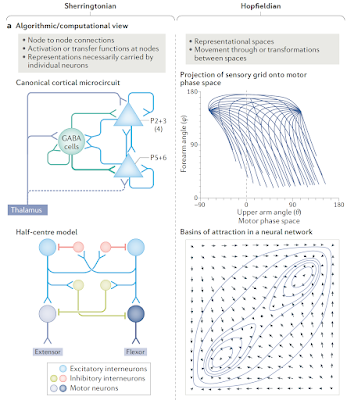How many neurons does it take to change a lightbulb?

I’ve been reading this excellent paper by David Barack and John Krakauer, on “ Two Views on the Cognitive Brain ”, and it made me wonder about which mode of nervous system function might have come first. To use their terminology, the “Sherringtonian” view (named after Charles Scott Sherrington ) focuses on individual neurons as the elementary units of control, computation, and cognition. In this view, neurons can be thought of as individual relays in a control circuit (such as a reflex) or as elements performing discrete logical operations, which can be combined into larger circuits to carry out more complex computations. It’s all very bottom-up, algorithmic, and mechanistic (and, indeed, provided the inspiration for artificial neuronal networks, as conceived by McCulloch and Pitts ). The “Hopfieldian” view (after John Hopfield ), by contrast, takes the view that more global and dynamic patterns of activity across populations of neurons are the elements encoding and representing c...